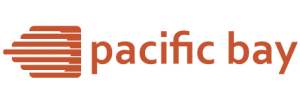Microphones and Microchips: Gangnam Karaoke’s Tech Edge Keeps Crowds Singing
The neon arteries that criss-cross Gangnam pulse with speakers, LED billboards, and pop choruses that drift through half-open doors. While other nightlife districts in South Korea have reported thinner foot traffic since the pandemic, Gangnam’s karaoke 쩜오 가성비업소 모음 suites still report waiting lists on Friday and Saturday evenings. The district’s marriage of high technology and pop culture lies at the heart of that resilience. Collections from karaoke venues across the country climbed 8.7 percent in 2024 to roughly 29.4 billion won, with Gangnam responsible for a disproportionate share of that figure.
A district built for late-night spontaneity
Seoul’s south bank business hub attracts office workers, conference delegates, and tourists who finish dinner and look for activities that do not require strict dress codes or language skills. Karaoke—noraebang in Korean—meets that need. Lounge operators cluster near subway exits 9, 10, and 11, areas where twelve subway lines and dozens of bus routes intersect. Guests often decide on the spot to head upstairs rather than organise plans days ahead.
Next-generation sound hooks first-time visitors
Early noraebang rooms relied on basic amplifiers and coin-operated song selectors. The latest Gangnam lounges deploy ceiling arrays that map sound in real time, balancing vocals for each corner of the booth. Touch panels translate menus into five languages, widening the client base without extra staffing costs. 4K projectors link to motion sensors so background visuals respond when singers raise a fist for a key change. Customers who try these rooms once often return because home equipment rarely matches the audio depth and seamless interface.
Private booths feel like small recording studios
Many Gangnam venues replaced thin partitions with reinforced doors, bass traps, and acoustic fabric. Patrons need not worry about next-door feedback bleeding through, a concern that pushes more privacy-minded groups to book in this area rather than cheaper alleys north of the river. The sense of exclusivity justifies premium hourly rates that support bottle service, custom lighting presets, and on-call sound engineers.
Smartphones bridge offline and online fandom
Most booths now sync with fandom apps that post clips to social platforms within seconds. The feature turns a birthday chorus or corporate outing into shareable content that extends the venue’s marketing reach. Automatic hashtags credit the lounge without overt advertising, and singers receive digital loyalty stamps toward discounted drinks on the next visit. That loop keeps engagement high even on weeknights when walk-in traffic would otherwise slow.
Spillover benefits for local creatives
Instrumental tracks and lyric licensing fees flow to publishers, while freelance sound technicians pick up shifts tuning the rooms. Regional universities report higher enrolment in audio engineering electives, citing steady part-time work in Gangnam karaoke lounges as motivation. A single district thus sustains a slice of the wider music economy, countering the national fall in noraebang head-counts reported elsewhere.
Outlook
Even as sober-curious youth trim alcohol intake, Gangnam karaoke operators adapt by expanding mocktail menus and offering afternoon pricing for family groups. Their emphasis on comfort, privacy, and technology positions the scene to remain a cultural fixture rather than a nostalgia act.



Leave a Reply
Want to join the discussion?Feel free to contribute!